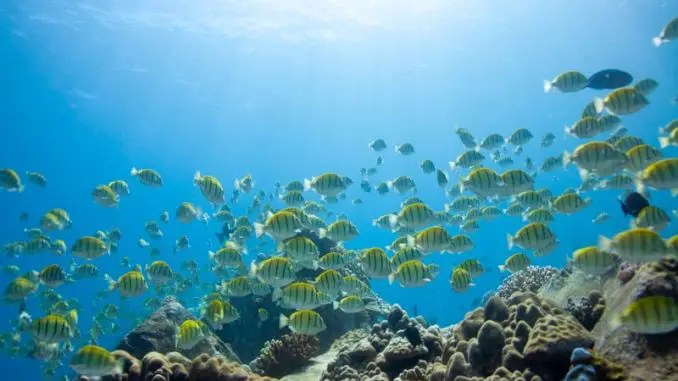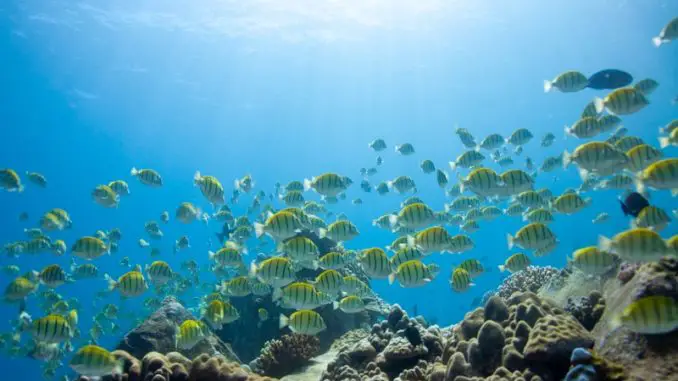
It's easy to understand why saltwater aquariums are so common: they provide an abundance of vibrant fish and the ability to create a reef environment.
Whether you want corals or not, a Convict Tang will be a great addition to your setup. They usually stay out of trouble and usually only show aggression in the process of similar species.
However, it is definitely worth the risk to do so as they are very attractive and vigorous, making your aquarium relatively more interesting to sit and observe.
In case you are thinking of purchasing some Convict Tangs, you will find this article helpful. We will cover all the aspects you might want to know, such as their good habitat, splendid diet, and good tank mates.
Convict Tang Facts and Overview
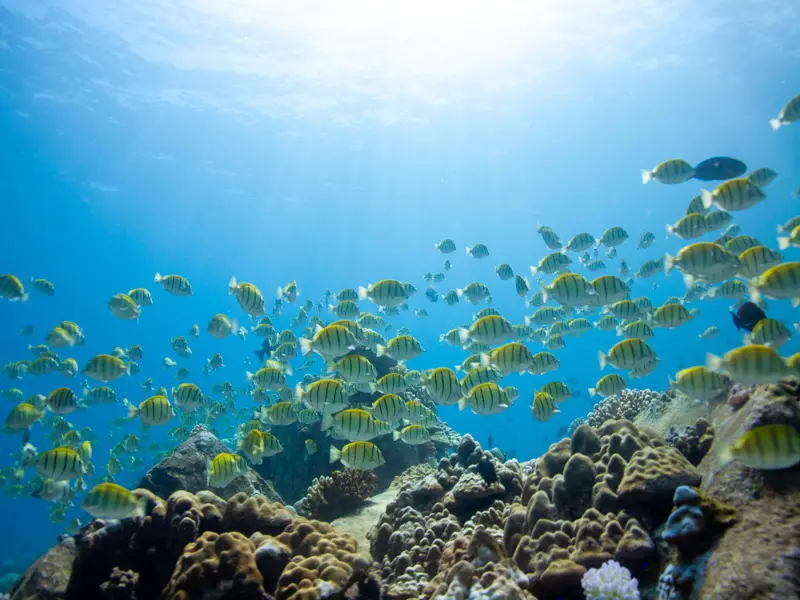
| Class | Classification |
| Care Diploma: | Intermediate |
| Temper: | Semi-aggressive |
| Color type: | black and white stripes |
| Life expectancy: | Up to 30 years |
| Top: | 8 inches |
| Weight reduction program: | Omnivore |
| Family: | Acanthuridae |
| Minimum tank measurement: | 75 gallons |
| Tank configuration: | Saltwater: fish only or reef environment |
| Compatibility: | peaceful group |
The Convict Tang (Acanthurus triostegus), or Convict Sturgeonfish, is a saltwater species in the entire family Acanthuridae.
They are quite widespread. They are typically found throughout the Indo-Pacific, Eastern Pacific, Hawaii, Mediterranean Sea, and Adriatic Sea. They stay in shallow reefs.
The Convict Tangs are not too difficult to operate, however, some experience is helpful in case any stalling occurs or you encounter operational problems.
A healthy Convict tang can stay up to 30 years in captivity, which is a huge commitment. They will survive even longer in the wild.
Its value can vary greatly depending on where you are. Expect to find them for $50 or more.
For this price, you may want to make sure the fish is healthy, so check it carefully for signs of illness or injury before purchasing. If you discover a problem, please go to a single store.
Typical habits
They get their establishment from their pattern, not from their behavior.
This is without a doubt one of the peaceful Tang species that you can discover. However, they are usually slightly aggressive towards other similar species, so they should only be kept with different peaceful fish.
They can occupy all levels of the tank, primarily driven by searching for algae on surfaces around the tank.
They are naturally schooling fish, but that is much less common in captivity because it can actually cause aggression problems unless the tank is large enough.
Look
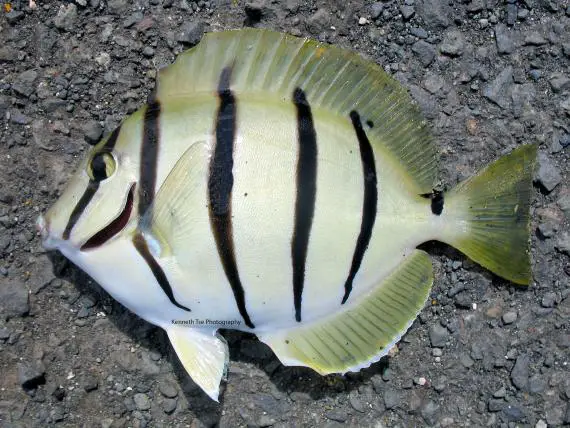
The Convict Tangs have a fairly simple design. It's probably not the most colorful fish, but it's still a very attractive fish.
They have a white physique with black vertical stripes spaced normally from the head to the tail fin.
The dorsal fin extends practically the entire size of the body, however it is transitory and does not grow away from the body. This fin is dyed in yellow tones.
As soon as it is fully mature, a Convict Tang can reach 8 inches. I'll probably buy it for a particular young person about 6 inches long, so be prepared for it to grow slightly.
Their size can be a little deceiving because they require relatively more space than you would expect for a fish of this size.
Sexing this species goes as far as evaluating size. Males are noticeably smaller than females.
Habitat and tank circumstances
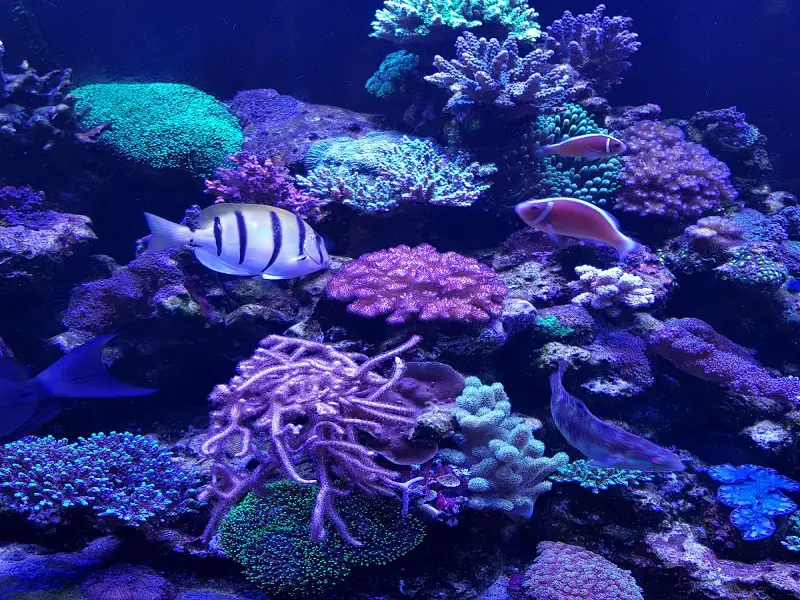
It is a very widespread species. Convict Tangs are primarily found in the Indo-Pacific and Eastern Pacific, but have also been reported throughout the Mediterranean Sea and Adriatic Sea.
They are found in shallow coral reefs, no more than 300 feet deep, surrounded by many different species.
These areas are salt water; The water may be warm and alkaline. Corals make up much of the spherical supplies, but there may also be weeds and algae, the main element of a Tang convict's diet.
There may be a lot of light and water movement.
Repeat these habitats at home to keep your Convict Tangs healthy.
Tank circumstances
Convict Tangs can go in a fish-only tank or in a reef. They are protected by reefs, although they can nibble stony corals.
The aquarium needs to be safe, so ideally it should first be established for six months.
Most substrates are acceptable, so you will choose your own.
On top of the substrate there will be corals, a reef environment or boulder rock. Hiding spots are essential for shelter.
Decorations also present a large number of surfaces on which algae can grow.
The temperature should be 72 to 79°F and the pH should be 8.1 to 8.4. The specific gravity should be between 1.023 and 1.025.
Lighting is important to ensure algae growth, but regular lights are top quality.
The movement of water is also important. Present a house with a strong linear flow.
What size aquarium do you need?
The minimum tank dimension for a single Convict Tang is 75 gallons. They like to swim all over the tank and need plenty of room to move around.
Preserving numerous Convict Tangs would require an even taller tank, at least 100 gallons, which has plenty of hiding places.
The larger the tank, the less likely aggression will be.
tank mates
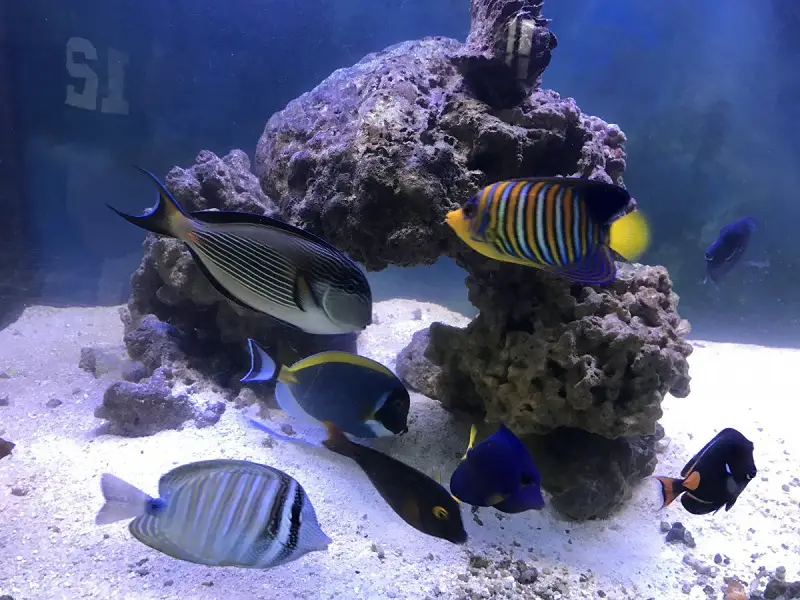
Convict Tangs are considered reef protected, so they make a great addition to your marine reef tank. Although they could nibble on large stony corals.
They are usually a peaceful species that can get along with totally different peaceful fish.
Points are earned when kept with completely different sturgeon or fish that look similar, such as butterflyfish or angelfish. Fighting is widespread between these groups.
Some protected tank mates include clownfish, green chromis, blennies, royal grannyfish, and cardinal fish.
Invertebrates should be protected with spherical Convict Tangs; are largely ignored. This includes corals, as long as the fish find enough to eat elsewhere.
Regularly check compatibility before purchasing any fish and mainly add the most aggressive species to the close of the aquarium, which could be your Convict Tang.
Can convict Tang be collectively protected?
It is possible to keep Convict Tangs together, but it is certainly not necessary. A group may begin to show aggression toward each other.
A large tank (over 100 gallons) will help reduce the chances of stalling. Lots of hiding areas would also help. Insert all the pins at the same time; Otherwise, newer fish will probably be intimidated.
Every fish is completely different and aggression is usually inevitable.
weight reduction program
These fish are omnivores, but their main food sources in the wild are weeds and algae. They feed on small invertebrates and stony corals at opportune times or if they don't discover something.
Throughout the aquarium, Convict Tangs will eat many completely different foods. They have dry foods, like flakes and pellets, and frozen foods, which can be a little more nutritious.
You may want to teach them to eat healthy foods, so make sure they actually consume what you give them.
A unique meal plan is the best way to provide all the vitamins they need. The protein in meat foods will help the growth of young fish.
If possible, give them small portions three times a day. They may devour algae the rest of the time.
It is important that you do not clean all the algae from your tank, it is an important food source.
Careful
It is a hardy species that establishes quickly throughout the tank. If their environment meets their requirements, they should be a healthy addition to an aquarium.
Some aquarists are only really comfortable with peaceful species. Those attempting to break away will need to consider Convict Tangs, as aggression is unusual.
Even students can try this species in case they really feel confident after having done some evaluation.
As soon as the tank is ready, you will need to keep it clean. Perform frequent partial water changes to reduce the buildup of air pollution.
Don't clean every algae you see, Convict Tangs need this for meals. Only intervene if the algae begin to get out of control.
The spikes can produce numerous residues. Larger tanks will help with repairs and prevent this from becoming a problem.
Diseases are rare because they are usually a robust species, but sturgeons are vulnerable to skin diseases. The most common case is ich, which appears as white spots along the body.
Quarantine affected fish before treating.
Breeding
Reproduction can also be very problematic in captivity. Requires a very large tank; one that people don't have in their homes.
Even with the perfect tank, getting them to breed is a battle, and to make things even more difficult, it is very difficult to raise the young ones.
If you want a breeding tank, this is not the species for you.
Is Convict Tang applicable to your aquarium?
Some fish keeping experience will likely be helpful in caring for Convict Tangs, but with a thorough evaluation, confident students should also be worth it.
Sometimes the points are unusual. It is a hardy species that generally keeps to itself.
You should be prepared for small portions of aggression, but hopefully, you should have minimized the risk of this the best way you designed your tank.
Convict Tangs are beautiful fish with a lot of character. They could add exercise and curiosity to your saltwater aquarium.
What is your Convict Tang aquarium like? Tell us about your setup through the suggestions below…
